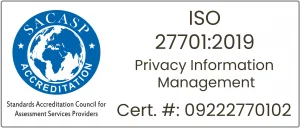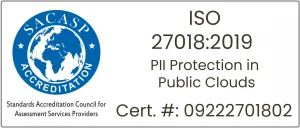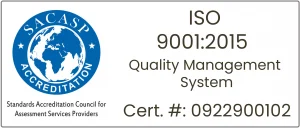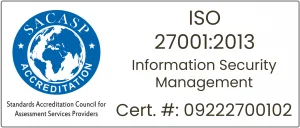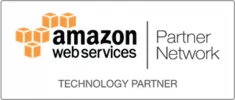© 2025 Macro Global. All Rights Reserved.
With the emergence of innovative technologies and the introduction of new payment methods, the payment industry is undergoing a major transformation that is shaping the future of payments. Payment modernization is an important part of this process and plays a key role in driving the evolution of the payments landscape.
The payment modernization trend is being driven by a variety of factors, including the need to simplify payment processes, increase security, reduce costs, and create new revenue opportunities. As a result, businesses are increasingly turning to technology-driven solutions to improve the customer experience and increase efficiency.
The most significant payment modernization trends include the move towards digital payments such as mobile, contactless, and cryptocurrency, the development of open banking solutions, the advancements in cross-border payments, and the adoption of innovative technologies such as artificial intelligence (AI) and blockchain.
Payment modernization is also a key imperative for financial institutions as industry transitions to real-time payments infrastructure. Across the globe, government and private organizations are collaborating to launch real-time payment schemes to support innovation in low-cost multi-currency payments processing.
Let us dive into the details!!!
Cross border Payment System: Then & Now
A legacy cross-border payment system is one that has been in use for a long time. It is complex, slow, outdated, prone to errors, and often difficult to integrate with newer technologies. They are also limited in terms of the types of currencies and payment methods they can handle.
These factors have resulted in delays in international payments and high transaction costs. The lack of transparency and security also hinders the effectiveness of these systems.
Therefore, the need for payment modernization has become increasingly apparent in recent years, as more businesses and individuals mandate easier, faster, and more secure ways to make cross-border payments. This is particularly true for businesses that manage international suppliers and customers, as legacy systems often cannot manage larger transactions and are not able to transfer funds in a timely manner.
However, with the advent of payment modernization, cross-border payments are now faster, more efficient, and more cost-effective than ever before.
One of the main drivers of this revolution is the usage of digital technologies. By utilizing digital technologies such as blockchain and distributed ledger technology, payments can be sent and received in seconds, while also providing an additional security layer. Besides, these technologies have enabled the development of new payment channels and services, such as mobile payments and online wallets.
This has made cross-border payments more accessible and convenient for both individuals and businesses, making them remain competitive in the global economy and in compliance with local regulations, as different countries have different compliance laws.
Key Features of Payment modernization
Payment modernization is an important process to streamline and optimize the payment systems with the following features.
Increased Security: One of the most notable features of payment modernization is the increased security of payment systems. Modern payment systems are designed to protect both the sender and the receiver from fraud and other malicious activities. This is accomplished through advanced encryption technologies, secure payment gateways, two-factor authentication, and other security measures.
Faster Payments: Today’s payment systems are designed to offer faster payment processing times and more efficient transaction processing. The use of digital payment methods, such as e-wallet solutions and mobile payment solutions, has enabled consumers to make payments instantaneously. Additionally, some payment solutions, such as blockchain technology, have sped up the process even further.
Payment Tracking: Payment tracking helps organizations to keep track of payments and ensure that all payments are received in a timely manner. Payment tracking can also provide valuable insights into customer behaviour and payment trends in cross-border payments.
Automated Payment Processes: Automation is a key feature of payment modernization. Automated payment processes can save time and reduce costs by eliminating manual tasks such as data entry and reconciliation. Automation also helps to reduce errors and improve accuracy. This can be a great advantage for businesses looking to reduce their payment cycle times and improve their customer service.
Integration: Payment modernization solutions are designed to be integrated with other systems and applications. This ensures that all payments are processed in a timely and efficient manner.
Multi-Currency Support: Supporting multiple currencies helps businesses to accept/ send cross-border payments around the world at ease. This helps to increase revenue and customer satisfaction.
Lower Transaction Fees: Advancement in payment systems has led to lower transaction fees, while still maintaining a healthy profit margin. This is due to increased competition between payment providers and decreased costs associated with processing digital payments.
Analytics: Various analytics and reporting tools offered by improved payment system can help businesses to analyse their payment data. This helps businesses to make better decisions about their payments.
Improved User Experience: Payment solutions are now more intuitive and user-friendly, allowing users to make payments quickly and easily. This is due to modern user interface elements, such as mobile-friendly payment forms and more streamlined checkout processes.
More Payment Options: Consumers have more payment options for both domestic & cross-border payments than ever before in the updated payment systems. From traditional methods, such as cash and credit cards, to more modern solutions, such as cryptocurrency and mobile payments, consumers can now choose the payment method that best suits their needs.
These advanced features are making domestic & cross-border payments more convenient and accessible for individuals and businesses and helping to drive the growth of the payments industry.
Benefits of Payment Modernization on Cross-border Payments
Payment modernization offers several benefits towards cross-border payments which is listed below:
- Faster transaction processing time
- Increased transparency and accuracy of payments
- Lower costs and improved efficiency
- Reduced risk of fraudulent activities
- Improved customer experience
- Increased liquidity and cash flow optimization
- Increased compliance with international regulations
- Easier access to global markets
- Greater scalability and flexibility
- Improved data security and privacy
Impacts of ISO 20022
There were too many standards to keep track of, each one varying across regions and industries, and in some cases, financial institutions even had their own proprietary standards such as
- ISO 15022 for cross-border settlement,
- ISO 8583 for credit and debit card settlement,
- FIX for stocks & trading,
- SWIFT (MT) in banking and
- DTCC is an example of market infrastructure employing proprietary standards.
The proliferation of standards (both ISO and private) has led to inefficiencies, inconsistent results, and a lack of opportunities for customisation in cross-border payments.
Moving ahead, ISO 20022 is a worldwide open messaging standard with the goal of creating a unified message language for use by financial institutions in different regions and countries. We can expect improved payment processing, visibility, and reconciliation if data quality increases.
Payment modernization relies significantly on ISO 20022. These norms strengthen data structure, allow for more flexible messaging, and bridge the gap between domestic and cross-border payments.
Several instant payment systems, such as the Unified Payments Interface (UPI), the Single Euro Payments Area (SEPA) Instant Credit Transfer, and the Real-time Payments Network, might be significantly improved if ISO 20022 standards were adopted. It paves the way for improved liquidity management through streamlined monetary dialogue.
ISO20022 makes it possible for banks to start using data analysis tools and value-added services like Request to Pay and electronic invoicing, which can give them insight into their customers and bring in additional money.
Once the ISO 20022 standard is in place, financial institutions will be able to use the detailed information contained in the ISO 20022 payment message format to better serve their clients.
The greater the number of financial institutions that use ISO 20022 messaging, the closer the financial services sector will get to establishing a universal payment language.
Critical Factors in Implementing Payment Modernization
Financial institutions today must either develop their own proprietary system or rely on a third-party modular payments platform to satisfy the needs of their customers, adhere to the latest payment regulations, and keep costs in check.
In their quest for payment modernization, financial institution should keep in mind the following:
Approach the migration in stages
Redesigning the entire financial transaction infrastructure at once could fail, resulting in wasted time and money. Choose a unified system that allows for a gradual transition to new payment methods, including instantaneous payments and high-value transactions.
Cloud-based deployment of the payment application
Use a cloud-native, scalable platform that can adapt to changing payment processing volumes for maximum operational agility and efficiency.
Invest in flexible and future-proof solutions
Choose a system that can easily incorporate additional channels, devices, and forms of payment. It should be flexible enough to incorporate various payment methods that yield immediate and substantial benefits.
Leverage microservices and open APIs
Use a modular platform with microservice design to launch and expand new transaction types like Request to Pay (RtP) with API integrations to deliver third-party payment services on top of existing payment rails.
Strengthen the data infrastructure to facilitate payment modernization
Find a platform that unifies payment messaging types (ISO 20022). Using this information, analysts can execute predictive performance management and open the door to new payment options and data/insights services.
Integrate anti-fraud and compliance measures across the supply chain
Invest in a platform that prevents fraud or integrates a fraud management solution into the present infrastructure to safeguard high-risk real-time payments made through digital channels.
Security Considerations with Payment Modernization for Cross-border Payments
The importance of secure cross-border payments in today’s digital economy cannot be overstated. As the sophistication of payment methods increases, businesses have a greater responsibility to ensure the safety of their consumer’s data and the effectiveness of monetary transactions.
Businesses need to take precautions against fraud by authenticating and authorising all payments, encrypting sensitive information, and verifying customer identities. By adopting these practices, businesses will improve the safety and efficiency of their consumers’ financial transactions.
The Future of Payment Modernization for Cross-border Payments
Both businesses and consumers have a lot to gain from payment modernization for cross-border transactions. It is enticing since it intends to streamline and improve financial transactions throughout the globe. Payments could be processed instantly in real-time with the help of modern automation tools, leading to quicker transactions and a better overall experience for customers.
Cost reductions, higher levels of security, improved accuracy, and increased productivity are just some of the advantages that can accrue to organisations and customers when innovative technologies are used as a part of payment modernization. With such modernization approach, cross-border payments should become much simpler, safer, and more effective.
It is to be noted that the process of payment modernization continues to extend and will develop further in tandem with recent technologies and the needs of consumers. Even if it might not be able to future proof the new approaches, the rising standardization, and adaptability of technology makes the journey a breeze.

